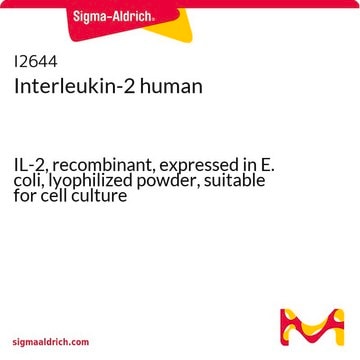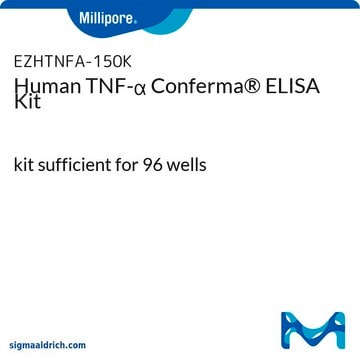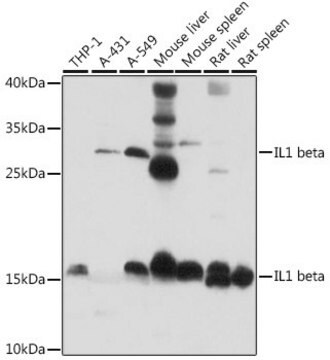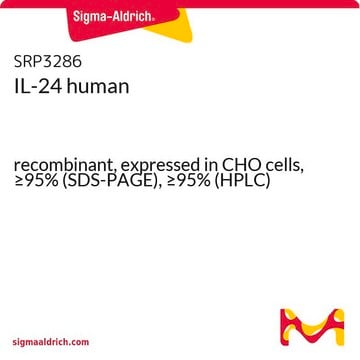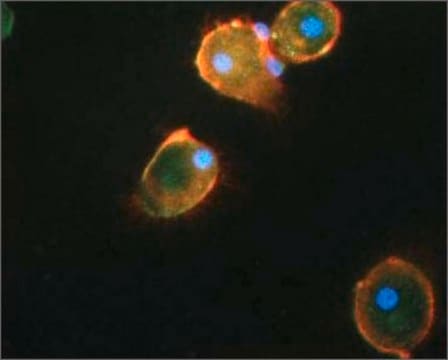SRP4975
IL-24 human
recombinant, expressed in Saccharomyces cerevisiae, ≥98% (SDS-PAGE), ≥98% (HPLC)
Synonym(s):
C49A, FISP, IL-24, IL10B, MDA7, ST16
Sign Into View Organizational & Contract Pricing
All Photos(1)
About This Item
UNSPSC Code:
12352202
NACRES:
NA.32
Recommended Products
biological source
human
recombinant
expressed in Saccharomyces cerevisiae
Assay
≥98% (HPLC)
≥98% (SDS-PAGE)
form
lyophilized
mol wt
~19.5 kDa
packaging
pkg of 10 μg
impurities
endotoxin, tested
NCBI accession no.
shipped in
wet ice
storage temp.
−20°C
Gene Information
human ... IL24(11009)
General description
IL24 is a member of the IL10 family of cytokines. It was identified as a gene induced during terminal differentiation in melanoma cells. IL-10B encoded can induce apoptosis selectively in various cancer cells. Overexpression IL-24 leads to elevated expression of several GADD family genes, which correlates with the induction of apoptosis. The phosphorylation of mitogen-activated protein kinase 14 (MAPK7/P38), and heat shock 27kDa protein 1 (HSPB2/HSP27) are found to be induced by this gene in melanoma cells, but not in normal immortal melanocytes. Alternatively spliced transcript variants encoding distinct isoforms have been reported. The glycosylation is essential for activity of IL-24. Functionally, IL-24 has diverse activities. At low concentrations, it induces type I proinflammatory cytokines such as IFN-γ, IL-1β, IL-12 and TNF-α. At high concentration, it is a strong inducer of apoptosis in tumor cells, but not normal cells. mda-7/IL-24 is being hailed as a ‘magic bullet′ for cancer gene therapy. Recombinant human Il-24 produced in yeast is a single, glycosylated, polypeptide chain containing 158 amino acids and having a molecular mass of 18 kDa. As a result of glycosilation, the protein migrates at 19.5 kDa on SDS-PAGE.
Physical form
Lyophilized from PBS with BSA as a carrier.
Reconstitution
Centrifuge the vial prior to opening. Avoid freeze-thaw cycles.
Reconstitute in sterile dH2O not less than 100 μg/ml. This solution can then be diluted into other aqueous buffers.
Choose from one of the most recent versions:
Certificates of Analysis (COA)
Lot/Batch Number
Don't see the Right Version?
If you require a particular version, you can look up a specific certificate by the Lot or Batch number.
Already Own This Product?
Find documentation for the products that you have recently purchased in the Document Library.
René Weiss et al.
Antiviral research, 123, 93-104 (2015-09-15)
New anti-viral agents and strategies are urgently needed to fight rapidly mutating viruses, as vaccine programs cannot react fast enough to prevent pandemics. Recently, we have shown that interleukin-24 (IL-24) sensitizes tumor cells to toll-like receptor 3 (TLR3) mediated apoptosis.
Our team of scientists has experience in all areas of research including Life Science, Material Science, Chemical Synthesis, Chromatography, Analytical and many others.
Contact Technical Service
